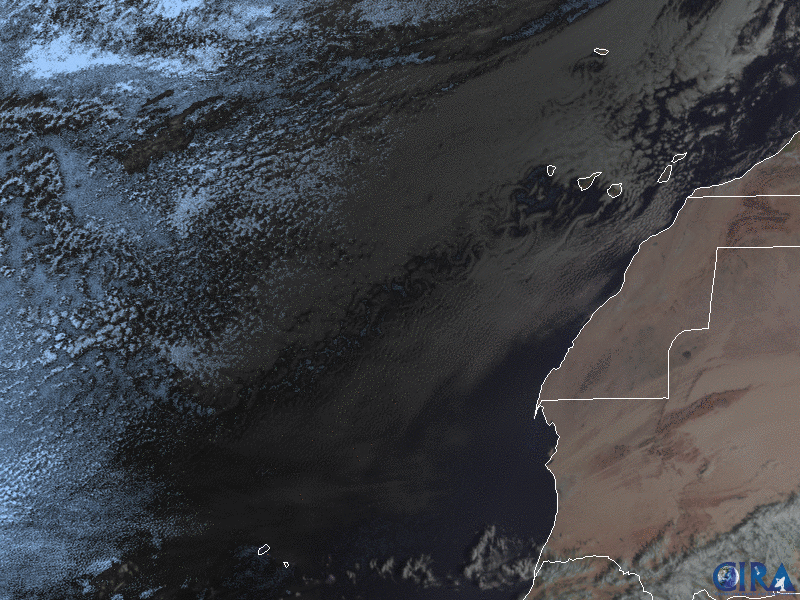
These spiral cloud eddies, seen by GOES East streaming off the Canary Islands on Feb. 20, 2020, are caused by von Kármán vortices. Named after Theodore von Kármán, a physicist who was the first to describe their formation in detail, they tend to occur anywhere that a streaming fluid, or in this case, atmospheric flow, is disturbed by an object and undergoes oscillation. Here, winds blowing across the ocean are diverted around the islands, flowing around them and producing clouds in an alternating direction of rotation.
There are numerous places in the world where this phenomenon occurs regularly, particularly where the Trade Winds are prevalent. These not only include the Canary Islands, but also Madeira Island, the Cape Verde Islands, as well as Guadalupe and Socorro Islands west of Baja California and the Juan Fernandez Islands off the Chilean coast. They have also been spotted in the Greenland Sea, in the Arctic, and even next to a tropical storm. The world's largest von Kármán vortices tend to form near the Hallasan Volcano on Jeju Island, off the coast of South Korea.

This image loop of the von Kármán vortices was recorded by EUMETSAT’s Meteosat-11 satellite on Feb. 20, 2020.
The GOES East geostationary satellite, also known as GOES-16, keeps watch over most of North America, including the continental United States and Mexico, as well as Central and South America, the Caribbean, and the Atlantic Ocean to the west coast of Africa. The satellite's high-resolution imagery provides optimal viewing of severe weather events, including thunderstorms, tropical storms, and hurricanes.
The animated loop was recorded by Meteosat-11, a geostationary satellite operated by our partners at the European Organization for the Exploitation of Meteorological Satellites (EUMETSAT). It monitors Europe, Africa, and the Indian Ocean.
